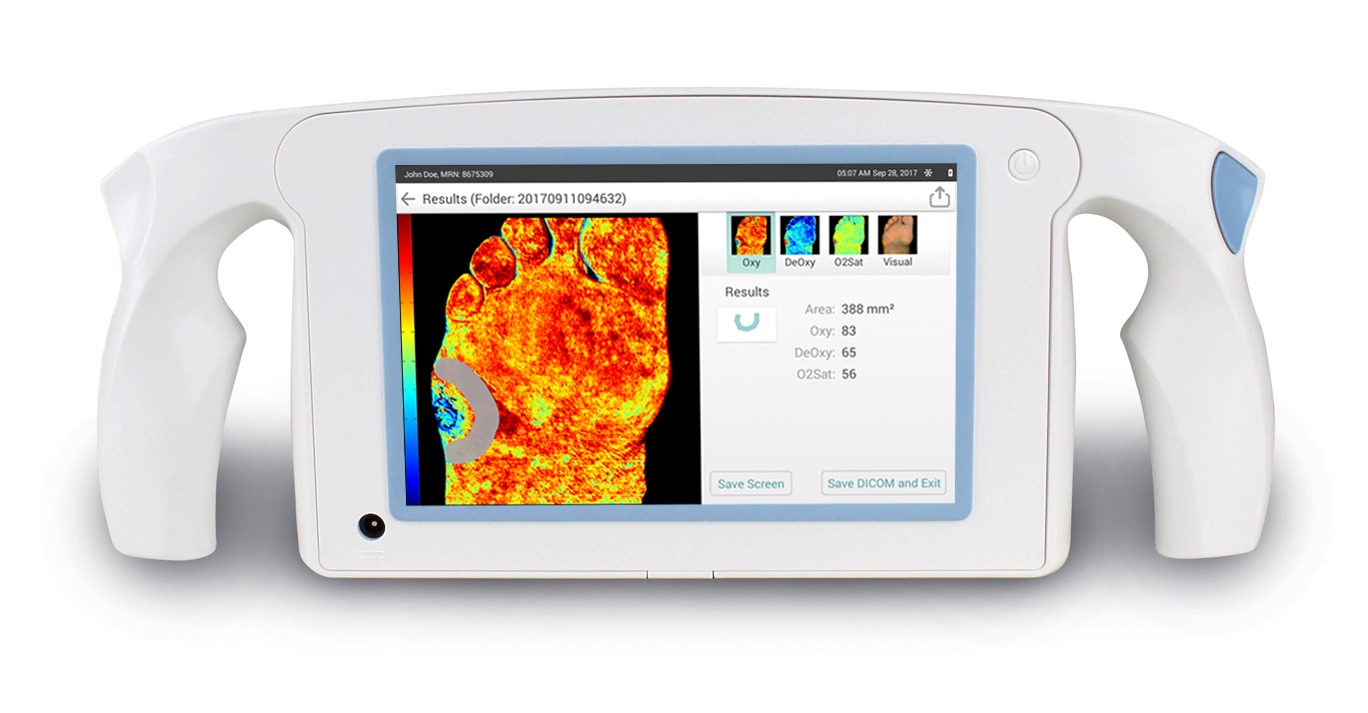
HyperMed Imaging is now selling its new HyperView imaging system to customers in the USA.
The HyperView system is US Food and Drug Administration (FDA)-cleared, and, according to a company press release, represents “a new standard of performance when assessing tissue oxygenation and perfusion in patients with potential circulatory compromise.”
The HyperView is a handheld, battery operated, non-invasive and portable diagnostic imaging device that is used to assess tissue oxygenation without contacting the patient and without the need for injectable contrast. The system uses proprietary technology to capture colour-coded images containing data that provides the clinician critical information such as oxyhaemoglobin levels (Oxy), deoxyhaemoglobin levels (Deoxy) and oxygen saturation (O2Sat) in superficial tissue. Such information may assist clinicians when determining if a patient has adequate blood perfusion to heal a wound or maintain healthy tissue. Understanding both arterial and venous sufficiency in the surface tissue may enable clinicians to make more informed decisions regarding when to intervene, the company says. The HyperView system also helps document perfusion levels before and after vascular interventional procedures such as: peripheral bypass, stent placement, or balloon angioplasty.
HyperMed’s vice president of sales, Annette Plishka, commented, “There are many important applications for this exciting new diagnostic imaging device in wound care, vascular intervention and reconstructive surgery.”
HyperMed’s president and chief executive officer, Mark Darty, added, “Early market feedback from customers has confirmed that HyperView is a game changer. It is a product poised to impact a number of important market segments. The low cost, speed, portability, ease of use and high-quality data and imagery provide clinicians a new class of tool to rapidly assess perfusion and locate ischaemic tissue. This information helps caregivers better understand potential circulatory compromise and allow more informed treatment of complications of vascular disease and diabetes.”











